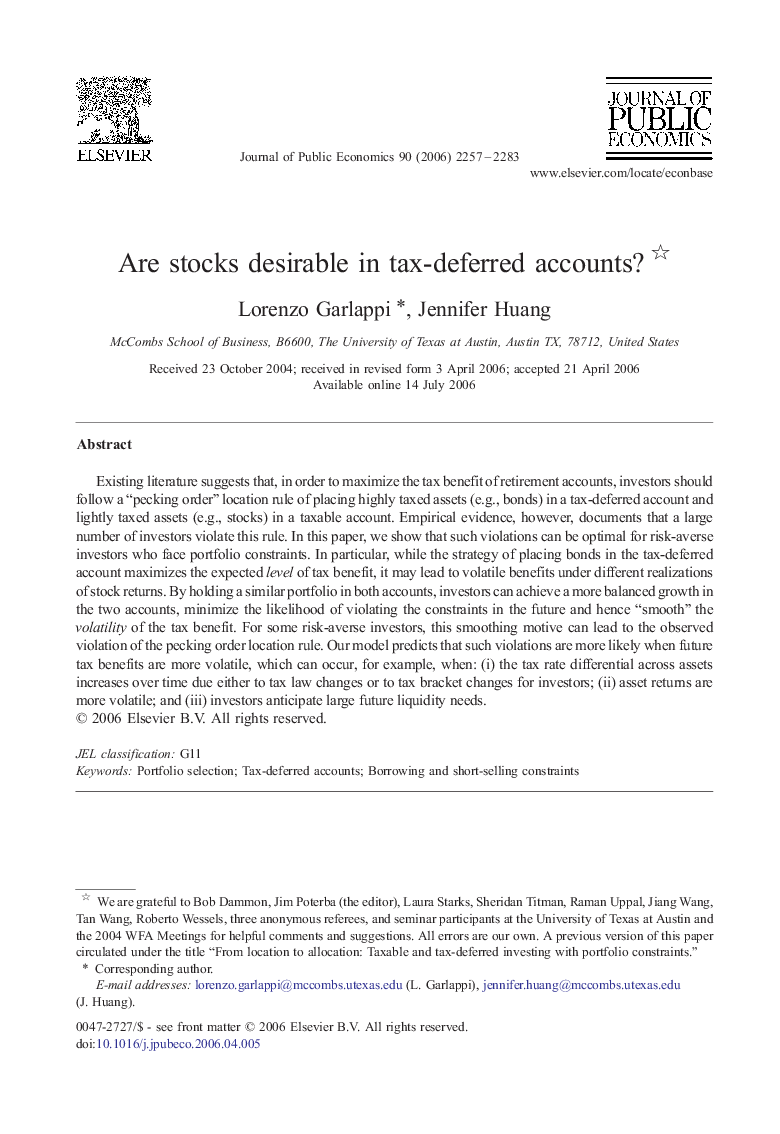| Article ID | Journal | Published Year | Pages | File Type |
|---|---|---|---|---|
| 970353 | Journal of Public Economics | 2006 | 27 Pages |
Existing literature suggests that, in order to maximize the tax benefit of retirement accounts, investors should follow a “pecking order” location rule of placing highly taxed assets (e.g., bonds) in a tax-deferred account and lightly taxed assets (e.g., stocks) in a taxable account. Empirical evidence, however, documents that a large number of investors violate this rule. In this paper, we show that such violations can be optimal for risk-averse investors who face portfolio constraints. In particular, while the strategy of placing bonds in the tax-deferred account maximizes the expected level of tax benefit, it may lead to volatile benefits under different realizations of stock returns. By holding a similar portfolio in both accounts, investors can achieve a more balanced growth in the two accounts, minimize the likelihood of violating the constraints in the future and hence “smooth” the volatility of the tax benefit. For some risk-averse investors, this smoothing motive can lead to the observed violation of the pecking order location rule. Our model predicts that such violations are more likely when future tax benefits are more volatile, which can occur, for example, when: (i) the tax rate differential across assets increases over time due either to tax law changes or to tax bracket changes for investors; (ii) asset returns are more volatile; and (iii) investors anticipate large future liquidity needs.
